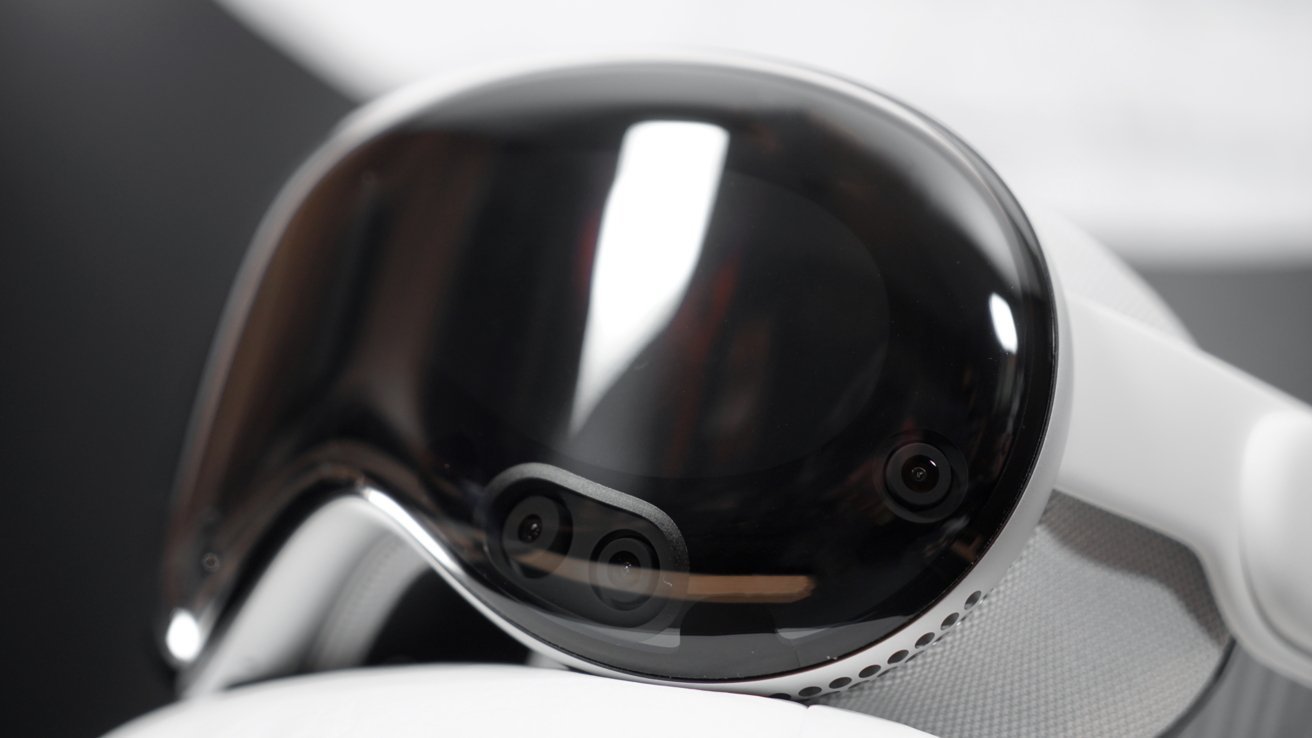A new report says that a more mass-market and lower-cost version of the Apple Vision Pro headset won't be as much of a stand-alone device as the existing model is.
Apple has been working on prototypes of a lower-cost AR/VR headset, following the debut of its original version. The future device is rumored to cut costs by narrowing the field of vision and other changes.
The major savings will come from requiring it be tethered to an iPhone or Mac for its computing power.
Such a move would both dramatically reduce the weight as well as the cost, along with an all-new design. Prototypes of the device, codenamed N107, are already being developed.
Bloomberg's latest "Power On" newsletter has suggested that the lower-cost version would be called "Apple Vision" to distinguish it from the existing Apple Vision Pro.
One possible change in the lower-cost model would be to remove the EyeSight feature that shows the user's eyes to people in the room. Reducing the quality of the internal VR screens has also been considered, according to reports.
While a price range of $1,500 to $2,000 has been suggested, Bloomberg reports that the company hopes to debut the lower-priced version by the end of 2025. It is still unclear if the lower price will improve demand for the spatial-computing headset.
Work on the next-generation version of the self-contained Apple Vision Pro, codenamed N109, is also proceeding — contrary to previous rumors. The second-gen Apple Vision Pro is expected to support faster processors — given that the M4 is already shipping in the iPad Pro. Also expected are improved external cameras.
The company hopes to reduce the weight and increase the comfort of the otherwise similar-looking version of the Apple Vision Pro. The new unit is thought to be unlikely to debut before late 2026.
 Charles Martin
Charles Martin







-m.jpg)






 Marko Zivkovic
Marko Zivkovic
 Christine McKee
Christine McKee
 Andrew Orr
Andrew Orr
 Andrew O'Hara
Andrew O'Hara
 William Gallagher
William Gallagher

 Mike Wuerthele
Mike Wuerthele
 Bon Adamson
Bon Adamson



-m.jpg)



31 Comments
If true, congratulations Apple, you’re on your way to doing what you should have done in the first place: rely on the computer already in people’s pockets. Next up, drop the “VR” bit, letting the headset into glasses. Voilá, you’ve turned your dud of a product into a guaranteed mass market success.
I’m honestly perfectly happy with tethering it to a Mac, iPad, and/or iPhone if they get the price way down. That’s the best way to use the Quest 2 my daughter has. Ideally, it would need to be wireless for people to really want to use it with the Mac.
This does seem smart. EyeSight is cool, but hardly essential to the user experience, and the next-gen iPhone processors (or subsequent models) should be at least as capable as the M2 in the AVP, especially if they are designed with this application in mind, as long as there aren’t significant latency issues caused by having the processor on a different device.
That can't happen the EU will want for the sake of competition and love all Windows and Android devices be allowed to have full connection rights to the Apple Vision. :)